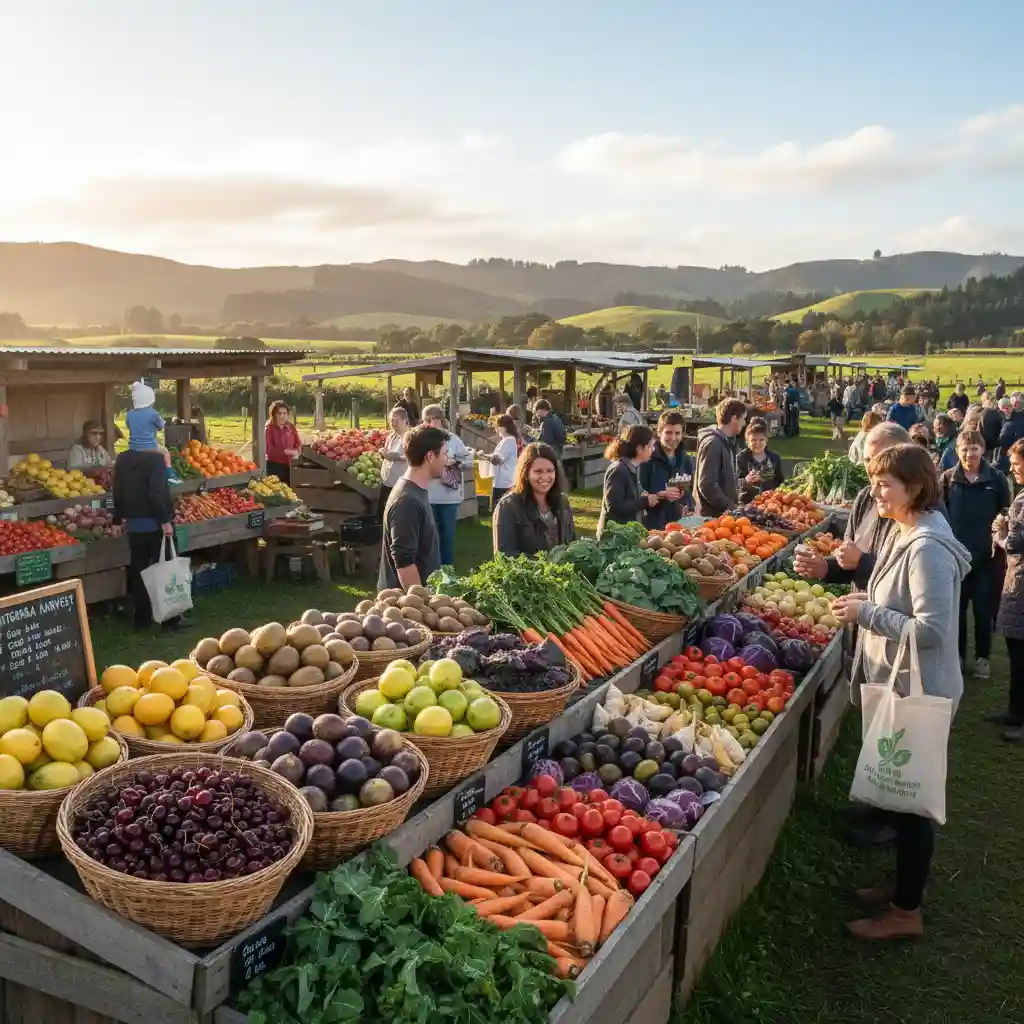Dreaming of fresh, homegrown produce free from chemicals? Eager to reduce your environmental footprint while enhancing your connection to the land? In Aotearoa New Zealand, building a sustainable home garden for organic living isn’t just a trend; it’s a powerful step towards self-sufficiency, ecological stewardship, and a healthier lifestyle. It’s about cultivating not just food, but a vibrant, resilient ecosystem right outside your door.
This comprehensive guide will equip you with the knowledge and practical steps to transform your backyard, balcony, or even a small patio into a thriving organic haven. From understanding local conditions to choosing the right plants and nurturing your soil, we’ll help you embark on a rewarding journey that benefits both you and Papatūānuku.
Table of Contents
Understanding Sustainable Gardening in Aotearoa
Sustainable gardening goes beyond simply growing organic produce. It’s an approach that respects and works with natural ecosystems, prioritising long-term ecological health. In the unique context of New Zealand, this means considering native biodiversity, water conservation in often drought-prone summers, and nurturing our specific soil types.
It’s about creating a garden that thrives with minimal external inputs, reduces waste, and supports local flora and fauna. By choosing to grow sustainably, you contribute to a healthier environment and a more resilient food system for all of Aotearoa.
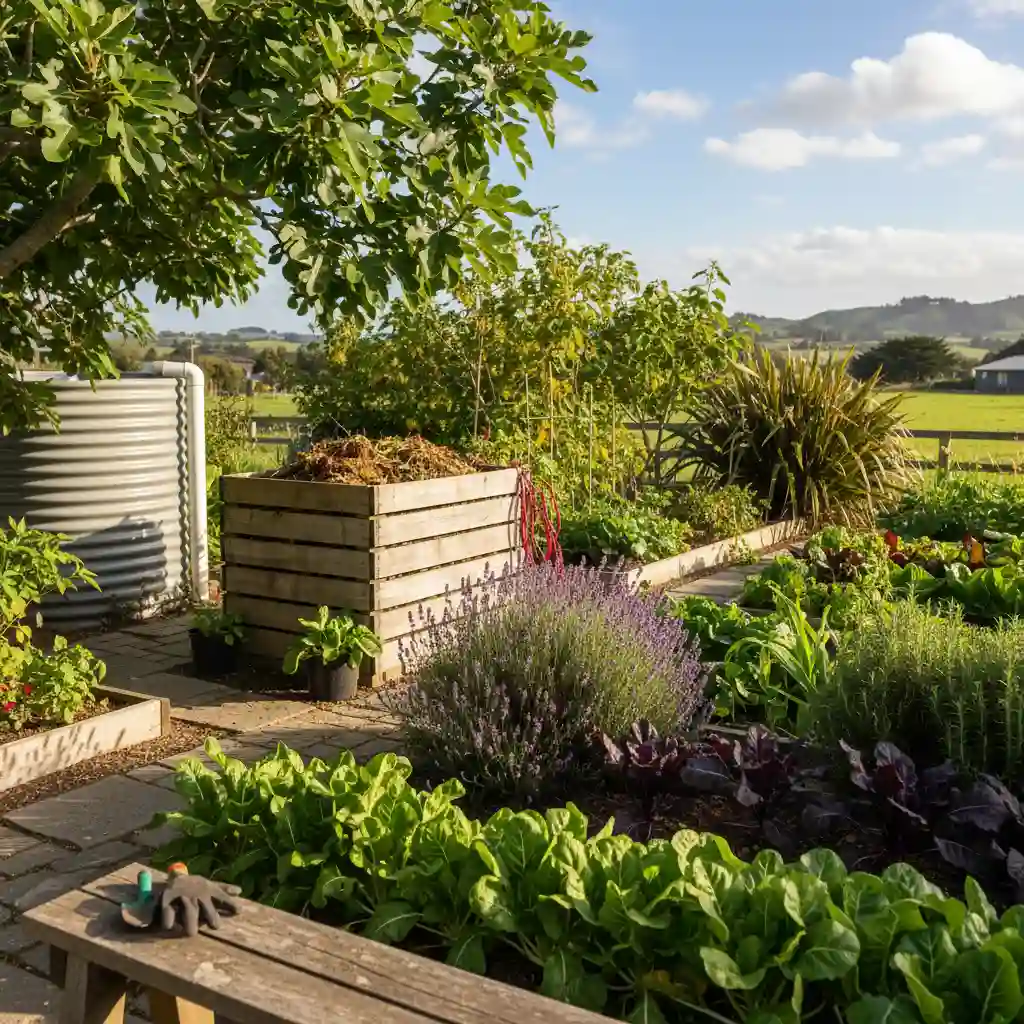
Key Principles of Organic Living in Your Garden
- Soil Health is Paramount: A living soil rich in organic matter is the foundation. This means no synthetic fertilisers or pesticides, instead relying on compost, worm castings, and green manures.
- Biodiversity Matters: Encourage a variety of plants, insects, and microorganisms. This creates a balanced ecosystem that naturally controls pests and enhances pollination.
- Water Conservation: Efficient watering techniques, rainwater harvesting, and mulching are crucial, especially in New Zealand’s varied climate.
- Waste Reduction: Turn kitchen scraps and garden waste into valuable compost, closing the loop on your household’s organic matter.
- Working with Nature: Observe your garden, understand its cycles, and adapt your practices to suit local conditions rather than forcing solutions.
“A thriving organic garden is a testament to working in harmony with nature, not against it. It’s a small but significant step towards a more sustainable future for New Zealand.”
Step-by-Step Guide: Building Your Sustainable Home Garden
Step 1: Assess Your Site and Soil
Before you dig, observe! How much sunlight does your chosen area receive throughout the day? Different plants have different light requirements. Next, understand your soil. Is it clay, sandy, or loamy? A simple soil test can reveal its pH and nutrient levels, guiding your initial amendments.
Action: Map sun exposure, perform a basic soil test (DIY kits are available), and note drainage patterns.
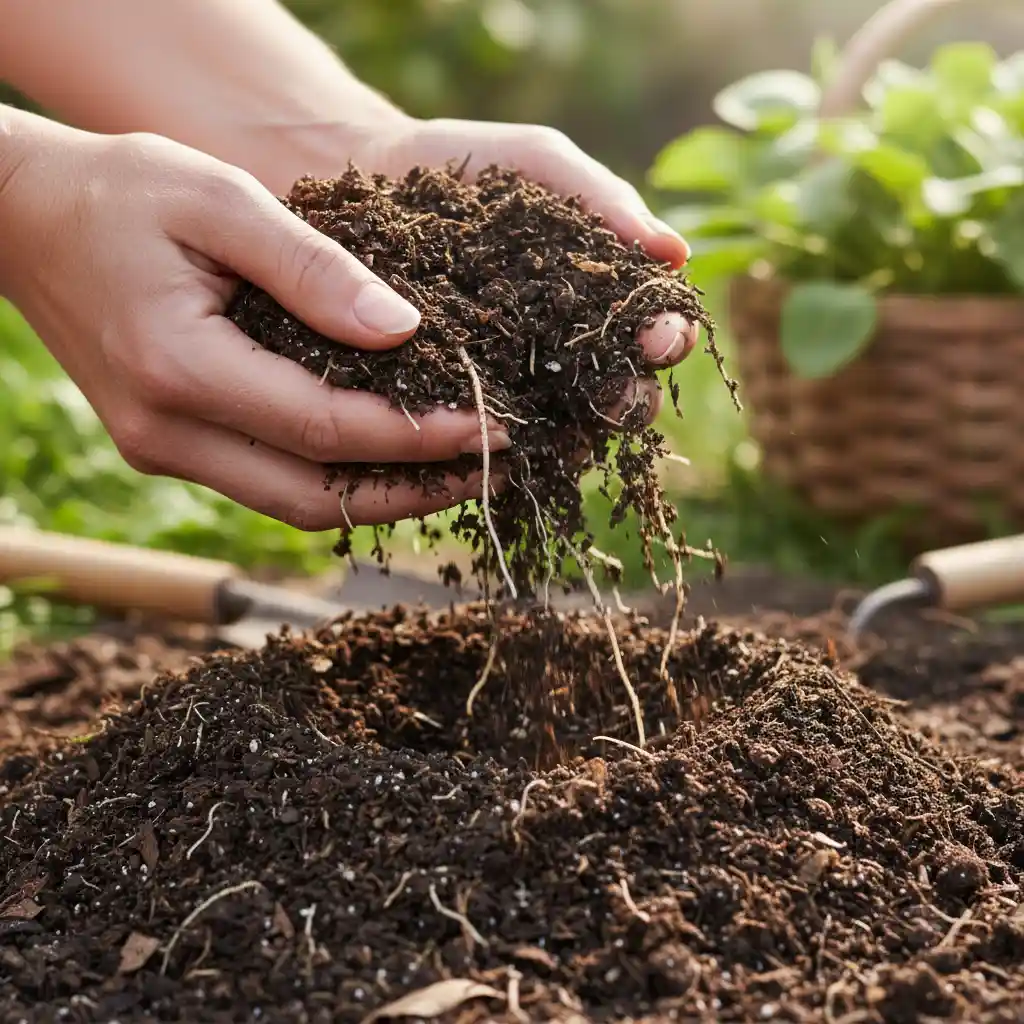
Step 2: Plan Your Garden Layout
Consider raised beds for easier management and better soil control, or integrate directly into existing beds. Think about accessibility for weeding and harvesting. Group plants with similar needs together. Vertical gardening solutions can maximise space in smaller areas.
Action: Sketch your garden plan, considering sun, water access, and plant groupings.
Step 3: Choose Native and Companion Plants
Select organic, open-pollinated, or heirloom seeds and seedlings. Integrate native New Zealand plants where possible to support local pollinators and biodiversity. Practice companion planting: growing certain plants together to deter pests or enhance growth. For example, marigolds deter nematodes, while basil can improve tomato flavour.
Stat Callout: New Zealand has over 2,500 native plant species, many of which can enhance your garden’s ecosystem and resilience!
Action: Research suitable organic varieties for your climate zone and identify beneficial companion planting pairings.
Step 4: Implement Water Conservation
Water is a precious resource. Install a rainwater tank if feasible. Use drip irrigation or soaker hoses to deliver water directly to plant roots, reducing evaporation. Apply a thick layer of organic mulch (straw, wood chips, shredded leaves) to retain soil moisture, suppress weeds, and regulate soil temperature.
Action: Set up a rainwater collection system or efficient irrigation, and regularly apply mulch.
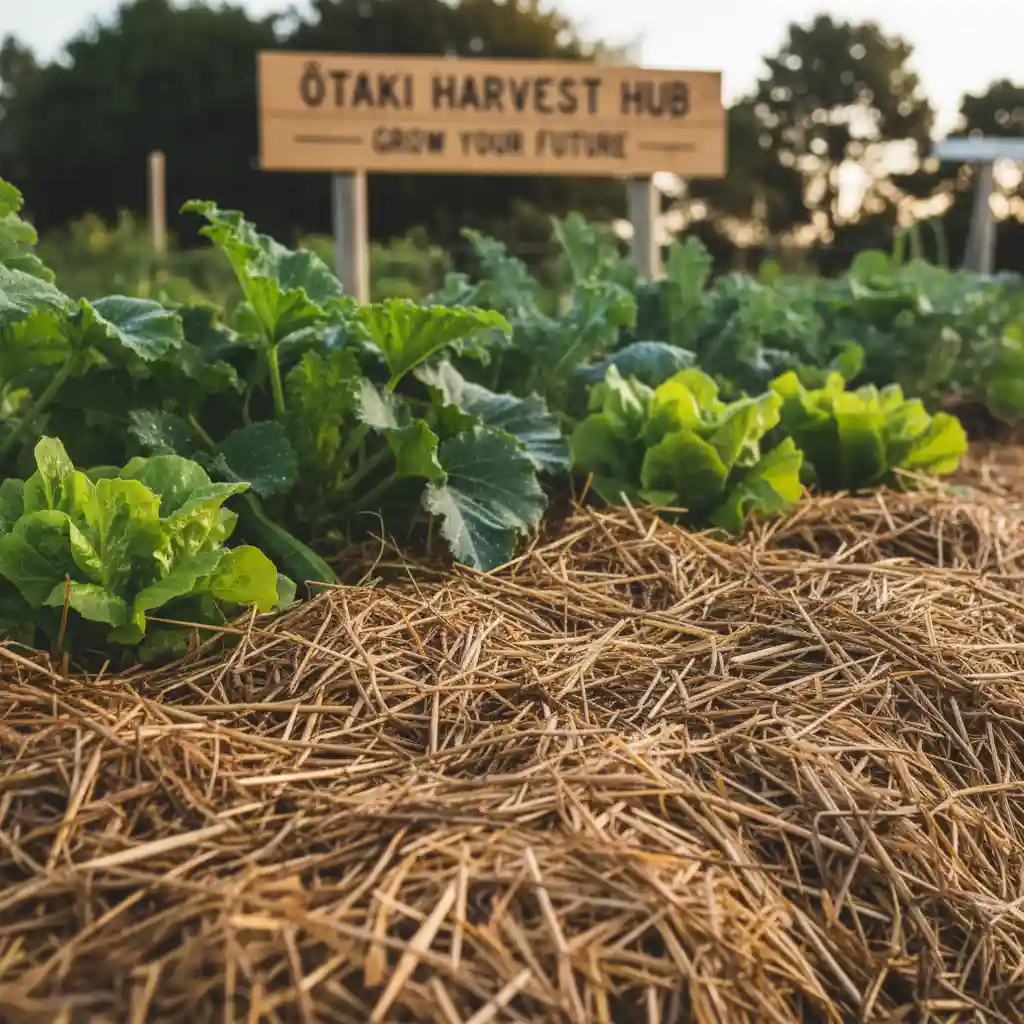
Step 5: Embrace Composting and Soil Health
Compost is your garden’s gold. Start a compost bin for kitchen scraps and garden waste. Consider a worm farm (vermicomposting) for highly potent fertiliser. Regularly amend your soil with mature compost to improve structure, fertility, and microbial life. Green manures (cover crops) can also be used to add nutrients back into the soil.
Action: Start composting or vermicomposting, and regularly enrich your garden beds with homemade compost.
Step 6: Natural Pest and Disease Management
Avoid chemical pesticides. Instead, rely on prevention and natural controls. Encourage beneficial insects like ladybugs and hoverflies by planting diverse flowering plants. Hand-pick larger pests, use physical barriers like netting, or employ organic sprays like neem oil or diluted soap solutions as a last resort. Healthy soil and strong plants are naturally more resistant.
Action: Promote biodiversity, practice regular garden inspection, and use organic pest control methods.
Step 7: Harvest Sustainably and Continually
Harvest regularly to encourage further production from many plants. Learn proper harvesting techniques to avoid damaging plants. Consider seed saving from open-pollinated varieties to build a resilient garden year after year and share with your community.
Action: Develop a harvesting schedule, learn seed-saving techniques, and share surplus with neighbours.
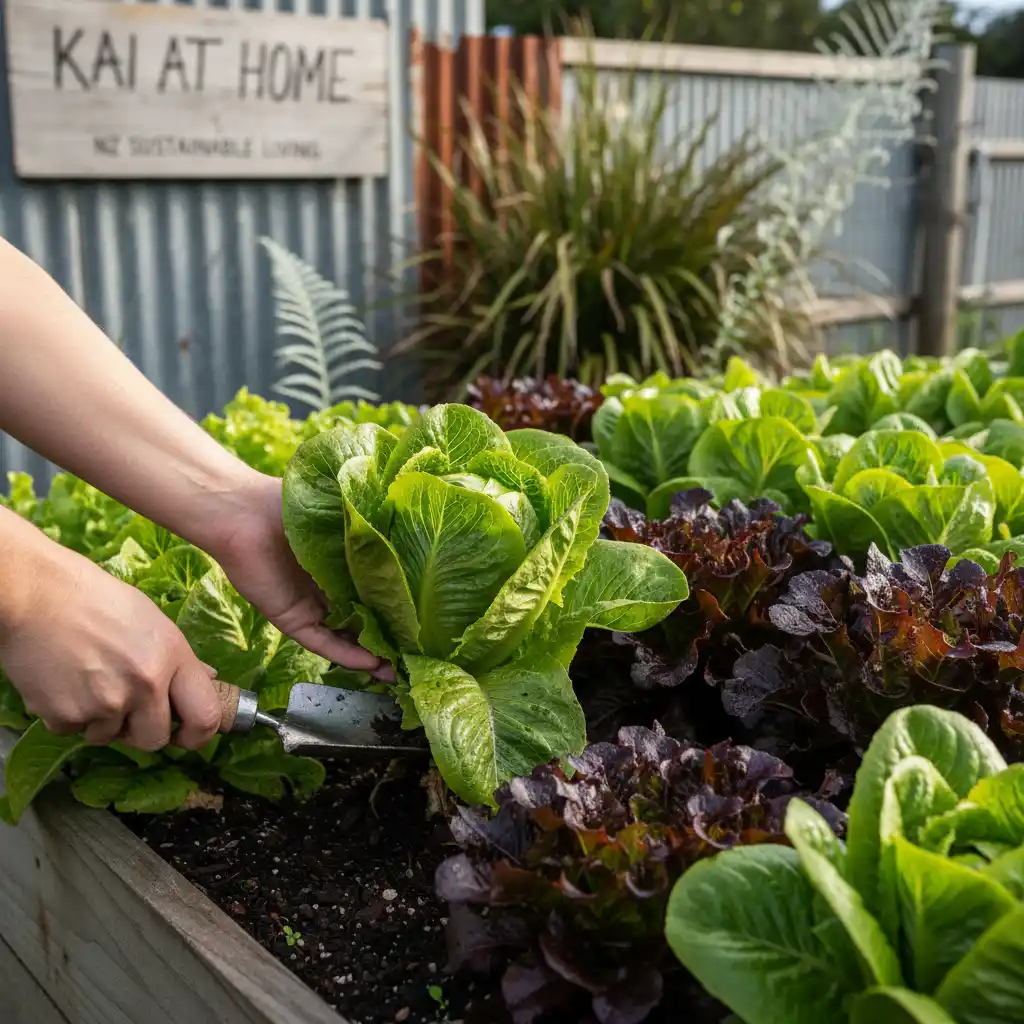
The Broader Impact of Your Home Garden
Building your sustainable home garden for organic living is more than a personal endeavour; it’s a vital contribution to community well-being and environmental health. You reduce reliance on industrial agriculture, minimise transportation emissions, conserve water, and enrich local ecosystems. Moreover, connecting with nature through gardening can significantly boost mental and physical well-being.
Every seed planted, every worm nurtured, and every drop of water saved contributes to a more sustainable Aotearoa. Embrace the journey, learn from your experiences, and enjoy the delicious rewards of your own organic oasis.
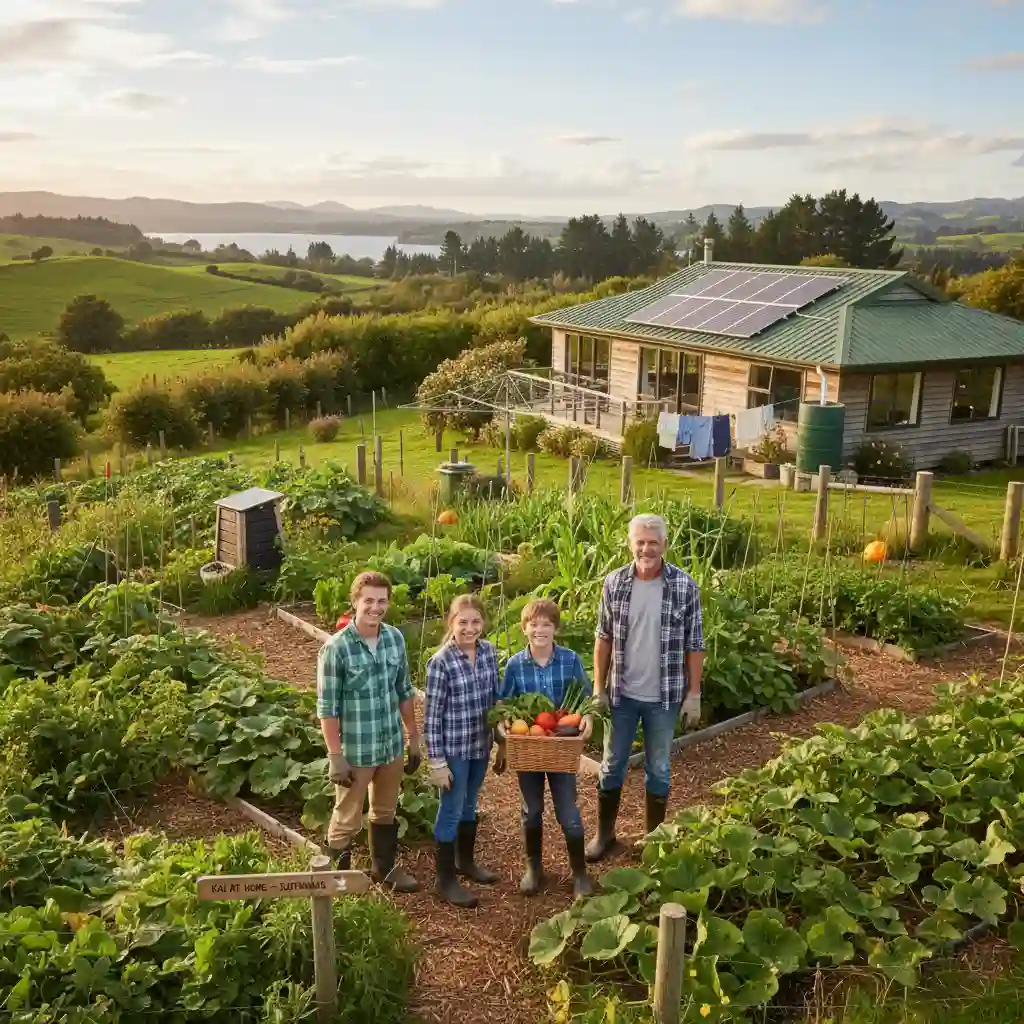
Frequently Asked Questions (FAQ)
What does “sustainable home garden” mean in New Zealand?
In New Zealand, a sustainable home garden refers to gardening practices that are environmentally responsible, conserve resources, enhance biodiversity (especially native species), and are economically viable in the long term. This often involves organic methods, water harvesting, composting, and choosing plants suited to local conditions.
How do I start an organic garden if I’m a beginner?
Start small! Choose a sunny spot, focus on improving your soil with compost, and select a few easy-to-grow vegetables like lettuce, spinach, or silverbeet. Observe your garden, learn as you go, and don’t be afraid to experiment. Local gardening groups or online resources specific to NZ can be very helpful.
What are some easy-to-grow organic vegetables for a New Zealand climate?
Many vegetables thrive organically in New Zealand. Consider leafy greens like silverbeet and lettuce, root vegetables such as carrots and radishes, and legumes like beans and peas. Tomatoes, courgettes, and capsicums are also popular choices, provided they get enough sun and warmth.
How can I improve my soil health naturally?
The best way to improve soil health naturally is through consistent addition of organic matter. This includes homemade compost, worm castings, well-rotted animal manures, and growing green manure crops. Avoid digging unnecessarily to preserve soil structure and microbial life.
Is it more expensive to grow an organic garden?
Initial setup costs might be comparable, but in the long run, growing an organic garden can be significantly cheaper. You’ll save money on groceries, avoid purchasing synthetic fertilisers and pesticides, and can even save seeds. The value of fresh, nutritious, homegrown food is immeasurable.
References and Further Reading
- Ministry for Primary Industries (MPI) New Zealand – Sustainable Food & Fibre
- Organic NZ Magazine & Association
- Sustainable Coastlines New Zealand – Resources on Environmental Health
- Gardening with NZ Natives – Plant Information and Guides
- AgResearch New Zealand – Soil Health and Sustainable Agriculture
